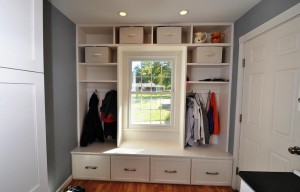Bathrooms Designed for Safety: Universal Design & Aging in Place Remodeling
With National Safety Month at hand, there’s no better time to shed light on an often overlooked, yet crucial, area of our homes—the bathrooms. With their hard surfaces, slippery floors and various fixtures, bathrooms can pose potential hazards if not thoughtfully designed with safety in mind—for people of all ages and physical abilities. In this article, we’ll explore smart design ideas for Universal Design and Aging in Place remodeling that can help you transform your bathrooms into safe havens.
Why You Should Consider Using a Certified Aging in Place Specialist for Your Bathroom Remodel

A Certified Aging Place Specialist is a professional who has undergone specialized training to understand the unique needs of individuals who wish to age in their own homes safely and comfortably. They have extensive, in-depth knowledge about Universal Design principles, accessibility features and home modifications that can enhance the lives of older adults or those with mobility challenges.
Your Certified Aging in Place Specialist can:
- Assess your current living environment to identify potential hazards or barriers.
- Make recommendations on personalized modifications or improvements that facilitate independent living.
- Offer a holistic approach to design, considering not only physical accessibility but factors such as comfort, usability and emotional well-being.
- Inform you about permits and compliance requirements, and building codes as they relate to accessibility modifications.
- Act as a liaison between you and your remodeling team to share their expertise to help create bathrooms that incorporate Universal Design and safety features, along with a pleasing design.
- Recommend elements and associated costs including such things as flooring materials, lighting, door and hallway widths, and other accessibility features so they are seamlessly integrated into your remodeling plans.
- Prioritize the importance of creating visually-appealing spaces that align with your aesthetic preferences, and balancing them with accessibility to create living spaces that are both attractive and accommodating.
The Centers for Disease Control and Prevention (CDC), reports that almost a quarter million adults are treated for injuries in bathrooms yearly, with four-fifths of those due to falls. That’s why it’s so important to work with professionals to design a bathroom that is safe. Following are some strategies you can implement in your bathroom remodels.
Maximizing Space Within the Bathroom
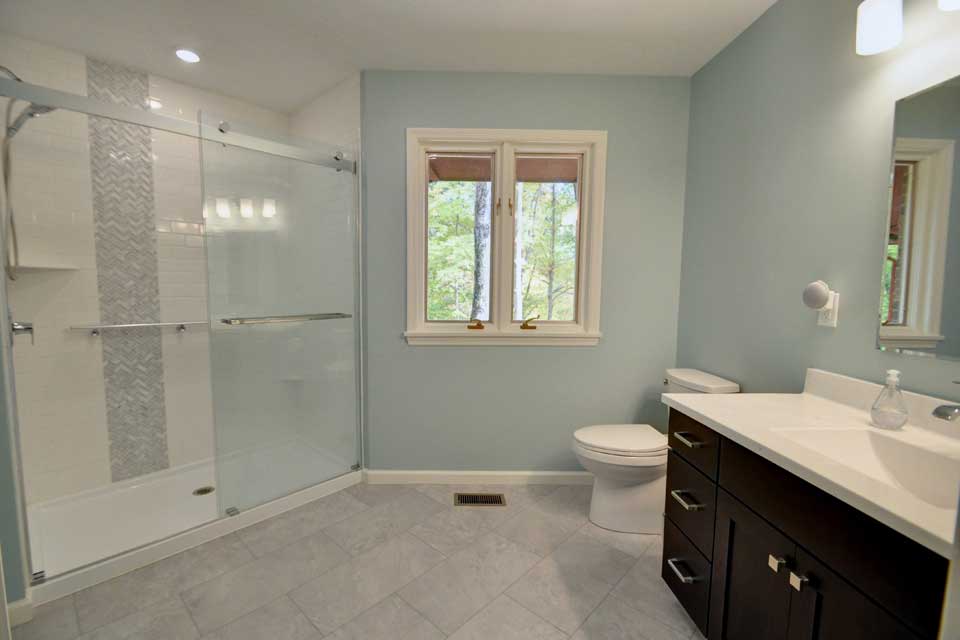
By implementing space-maximizing strategies in your bathroom remodel, you can create a more open, functional and accessible bathroom tailored to your unique needs for safety and ease of use. Space-creating ideas can include:
- Built-in niches instead of traditional shelves. Install recessed compartments in the shower area or near the bathtub to provide storage for toiletries, thus eliminating the need for bulky shower caddies or freestanding storage units.
- Floating shelves and cabinets instead of floor-standing options to provide storage for bathroom essentials.
- In-wall toilet paper holders to create a streamlined look.
- A wall-mounted vanity rather than a floor-standing one offers a sense of openness and visually expand the space.
- Corner sinks or shower stalls to take advantage of otherwise-unused areas.
- Wider doorways to improve accessibility and create a more spacious feel.
- Pocket doors that slide into the walls, save space and provide a seamless transition between rooms.
- Wall-mounted faucets to eliminate the need for a bulky countertop or vanity.
- Recessed ceiling lighting fixtures for ample illumination.
- Vertical storage solutions with tall cabinets or shelving units to maximize storage capacity while occupying a smaller footprint.
Slip-Resistant Flooring
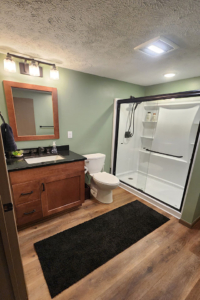
Slip-resistant flooring is a proactive measure to mitigate potential accidents and create a safer environment for people of all ages and abilities. It is a must-have for safety due to the unique moisture-prone environment of bathrooms. It can:
- Minimize the risk of slips and falls on wet surfaces. It provides better traction and grip, especially near showers, bathtubs and sinks where water, soap and other bathroom products can create a slippery surface.
- Withstand moisture and water splashes by providing resistance to water penetration and preventing the accumulation of moisture that can lead to mold, mildew or water damage to the flooring.
- Enhance safety for all users, regardless of age or ability and reduce the fear of slipping and the chance of accidents.
- Meet compliance requirements for safety standards and building codes.
- Be easy to clean and maintain. Its textured surfaces do not trap dirt and grime as easily as smooth surfaces.
Some of the more popular choices for safe bathroom flooring include non-slip vinyl, natural stone, bamboo, cork, linoleum and rubber flooring. But regardless of the flooring type, proper installation and regular maintenance are key to ensuring its flip resistance and durability.
Shower Safety
There are many potential hazards associated with the slippery surfaces, water and various bathroom products in your shower, so taking proactive measures to ensure safety with a bathroom remodel is essential. Here’s why shower safety is important. It:
- Prevents slips and falls in wet and slippery conditions. Features including slip-resistant flooring, grab bars and handrails can significantly reduce the risk of accidents and provide stability and support, especially for those with mobility challenges or limited balance. In addition, a linear shower drain allows water to drain efficiently and minimized pooling which can lead to the risk of slipping on standing water. It can also eliminate the need for a traditional central drain, creating a seamless shower floor and easier accessibility.
- Addresses accessibility, allowing individuals with varying degrees of mobility to maintain their independence and personal hygiene. Design considerations can include barrier-free or low-threshold showers, strategically-placed grab bars and adjustable showerheads.
- Mitigates scalding and burns by property regulating water temperature. Install anti-scald devices such as pressure-balanced or thermostatic mixing valves to maintain a safe and consistent water temperature.
- Ensures proper ventilation to prevent the buildup of moisture that can lead to mildew or mold. Exhaust fans help control humidity levels and improve air quality.
- Incorporates ergonomic design principles that enhance comfort and ease of use, like the optimal placement of controls, showerheads and seating options.
Toilet and Tub Safety
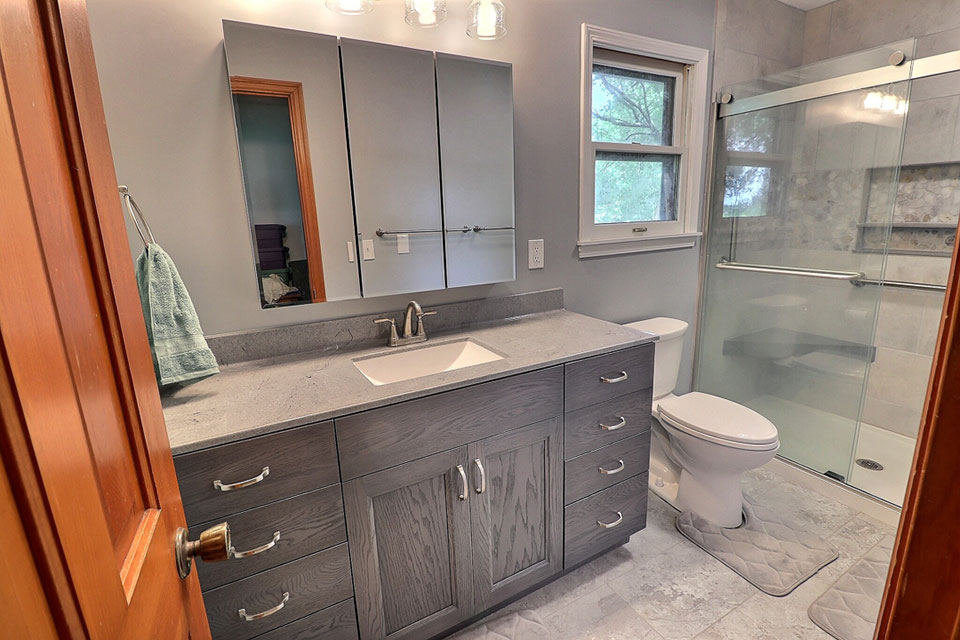
A CAPS professional and your remodeler can provide valuable guidance to help you customize the safety features for your toilet and tub to create a more secure and user-friendly environment. Here are some ways to enhance safety:
Toilet Safety:
- Proper toilet height for ease of use and reduction of stains on knees and joints. An elevated or comfort-height toilet (taller than standard toilets), makes sitting down and standing up easier for those with mobility limitations.
- Toilet safety frame (freestanding or attached), typically with armrests, to surround the toilet.
- ADA-recommended grab bars for essential support and stability when sitting and standing.
- Non-slip or textured flooring to provide better traction, even in wet conditions.
- Adequate lighting, especially at night, to improve visibility.
Tub Safety:
- Slip-resistant materials or non-slip coatings, including within the tub itself and along the lip or edge. This provides a clear boundary and promotes stability.
- Grab bars to provide stability and assistance with balance, along with entering, exiting and maneuvering in the tub. Consider installing them on the wall beside the tub, and on the outer edge.
- Hand-held showerhead for greater control and flexibility while bathing. It enables users to direct water flow and minimizes the need for awkward movements or stretching.
- Tub accessibility includes walk-in tubs or low-entry tubs with doors for those who have difficulty stepping over high tub walls.
- Temperature regulation through thermostatic valves or anti-scald devices to prevent burns and ensure a comfortable bathing experience.
- A transfer bench that extends from outside the bathtub, allowing users to sit down and slide across into the tub.
Good Lighting
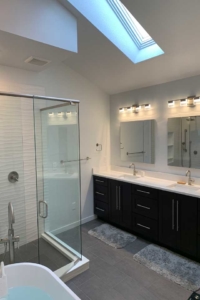 Every bathroom is unique, and lighting requirements may vary based on its size, layout and individual preferences. You’ll want to consult with your CAPS professional and remodeler to determine the best lighting plan for your space, taking into account safety, functionality, aesthetics and energy efficiency.
Every bathroom is unique, and lighting requirements may vary based on its size, layout and individual preferences. You’ll want to consult with your CAPS professional and remodeler to determine the best lighting plan for your space, taking into account safety, functionality, aesthetics and energy efficiency.
Here’s how lighting can contribute to bathroom safety:
- Visibility and clarity through sufficient and well-placed lighting to enhance visibility and minimize shadows and dark corners.
- Slip, trip and fall prevention, and help in spotting wet or slippery surfaces or items on the floor.
- Task lighting for applying makeup, shaving or reading medication labels.
- Mirror lighting around the bathroom mirror for grooming tasks.
- Nighttime safety, such as for late-night bathroom visits. Consider motion-activated night lights or ambient lighting.
- Accent and decorative lighting for overall ambience and aesthetics, and to promote a relaxing and enjoyable experience while maintaining sufficient brightness for safety. Utilize LED bulbs for energy efficiency and longevity, and dimmers for adaptable lighting levels during different times of day.
Handles and Knobs
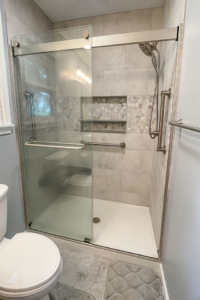
Even the handles and knobs within your bathroom can make it easier to maneuver and maintain balance. They assist with improved grip and stability, accessibility and ease of use for activities such as opening doors, operating faucets and accessing storage areas. Here are some recommendations and how they can contribute to safety:
- Level handles over traditional knobs. Offering effortless gripping and less force to open or close doors, cabinets or faucets, they are easier to grasp and operate, especially for individuals with limited hand strength, arthritis or dexterity issues.
- D-shaped pull handles provide a comfortable and secure grip for drawers, cabinets or wardrobe doors.
- Grab bars with a textured surface to enhance grip, even when hands are wet.
- Anti-scald faucet knobs prevent accidental burns by limiting water temperature to a safe level. They often have color-coded indicators or temperature limit stops to set water temperature within a safe range.
- Contrast and visibility against surrounding surfaces, making them easier to locate and operate.
National Safety Month takes place in June with the aim of promoting awareness and encouraging actions to prevent injuries and accidents both at home and in various aspects of daily life. It is crucial to recognize the significance of designing a bathroom with safety in mind, and an essential consideration—not only for older adults or individuals with mobility challenges, but for everyone in the household. By incorporating safety features and thoughtful design, you can reduce the risk of accidents and promote both independence and peace of mind.
Let Riverside Construction Design and Build Your Greater Lafayette Bathroom for Safety
Riverside Construction is an experienced and reputable remodeler that can assist homeowners in West Lafayette and Lafayette in designing and building a bathroom for safety or Aging in Place. We are proud to have two Certified Aging in Place Specialists on staff to help clients with recommendations on safety features and modifications that can enhance Universal Design and successful Aging in Place while maintaining a visually-appealing design. This demonstrates our commitment to prioritizing safety and accessibility in remodeling projects.
From initial design concepts to construction and completion, Riverside Construction manages your entire remodeling project efficiently. We coordinate with trusted trade partners, oversee the construction process, and keep homeowners informed throughout, ensuring a smooth and hassle-free experience. We are also knowledgeable about local building codes and accessibility guidelines so that your bathroom remodel meets all necessary safety standards and regulations.
Contact Riverside Construction
When you choose Riverside Construction, you can expect a professional and comprehensive approach. By collaborating with our team, you can transform your bathrooms into functional and beautiful spaces that promote safety, independence and comfort for years to come.
Contact us at 765-838-1644 or complete our convenient online form to schedule your free initial consultation.
In the meanwhile, view our portfolio of bathroom remodels. And sign up for our newsletter for ongoing inspiration!
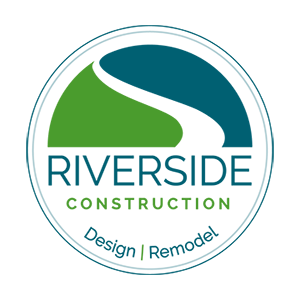
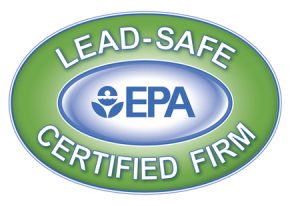 Fortune favors the prepared mind, as they say — and the prepared design-build remodeling company. That’s because the firms that are already compliant with the EPA’s Lead-Based Paint Renovation, Repair, and Painting (RRP) Rule are already prepared to keep you and your family safe during the pandemic. Turns out the same rules that require workers to be certified and trained in the use of lead-safe practices also apply to coronavirus-safe practices.
Fortune favors the prepared mind, as they say — and the prepared design-build remodeling company. That’s because the firms that are already compliant with the EPA’s Lead-Based Paint Renovation, Repair, and Painting (RRP) Rule are already prepared to keep you and your family safe during the pandemic. Turns out the same rules that require workers to be certified and trained in the use of lead-safe practices also apply to coronavirus-safe practices.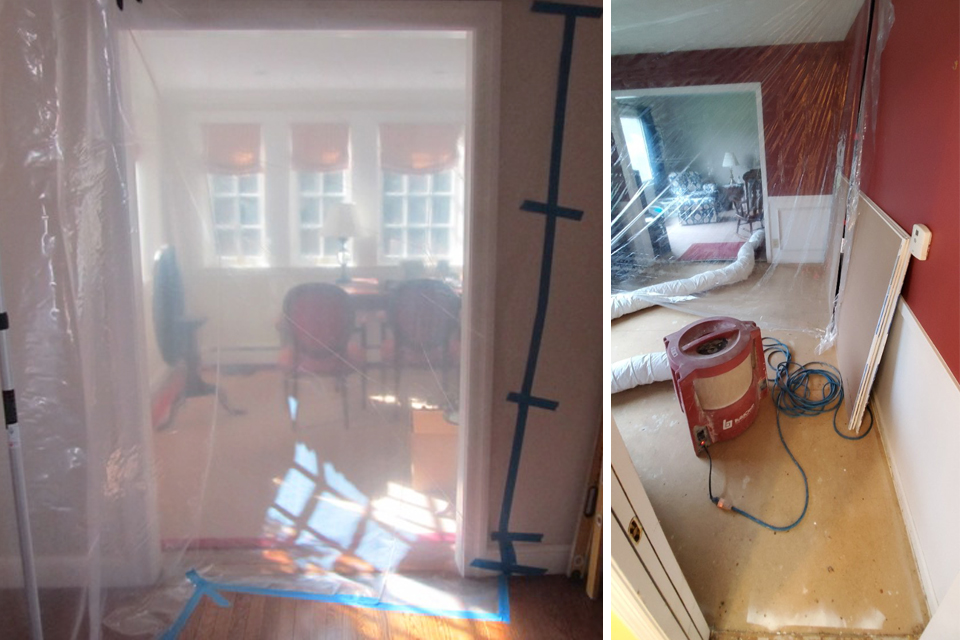 Home renovations are usually noisy, dusty, and messy projects involving numerous workers, heavy equipment, and physical disruption. Whenever lead paint might be involved RRP rules help prevent toxic particles from getting into the air and onto surfaces where they can be breathed in and do damage. As we’ve learned, COVID-19 also gets into the air and onto surfaces, so by applying similar containment techniques, your certified contractor can help mitigate any potential issues and keep you safe.
Home renovations are usually noisy, dusty, and messy projects involving numerous workers, heavy equipment, and physical disruption. Whenever lead paint might be involved RRP rules help prevent toxic particles from getting into the air and onto surfaces where they can be breathed in and do damage. As we’ve learned, COVID-19 also gets into the air and onto surfaces, so by applying similar containment techniques, your certified contractor can help mitigate any potential issues and keep you safe.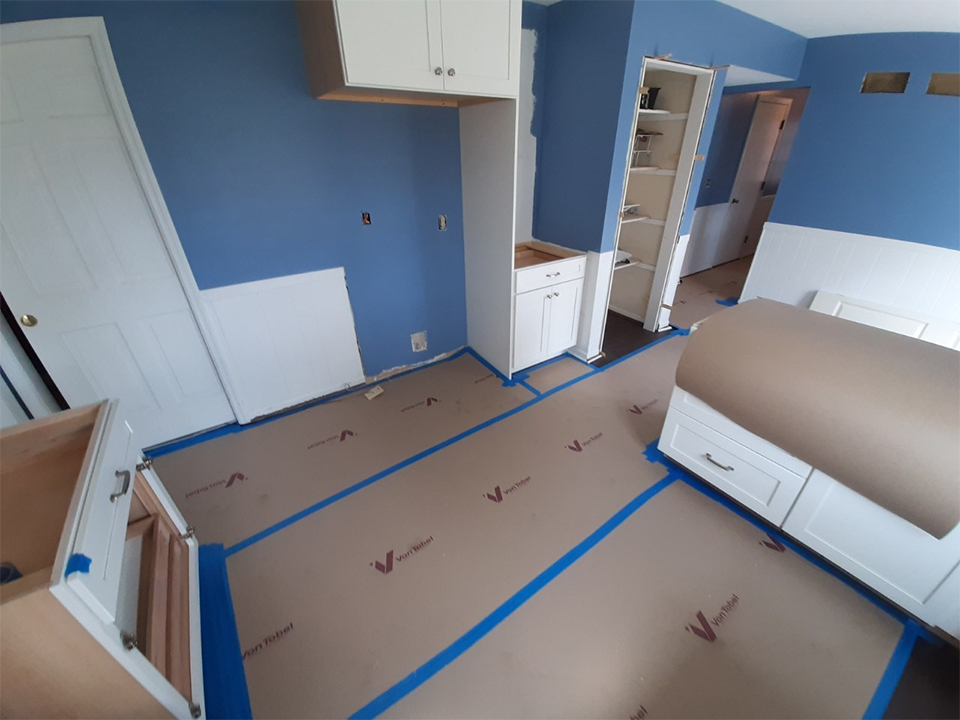 EPA’s renovation, repair, and painting rules are rigorous regarding cleaning procedures within a project zone, including specifications around cleaning methods, chemical agents, and frequency. Whether removing lead or the coronavirus, these techniques — when properly utilized — ensure that contained areas are precisely cleaned for personal safety.
EPA’s renovation, repair, and painting rules are rigorous regarding cleaning procedures within a project zone, including specifications around cleaning methods, chemical agents, and frequency. Whether removing lead or the coronavirus, these techniques — when properly utilized — ensure that contained areas are precisely cleaned for personal safety.